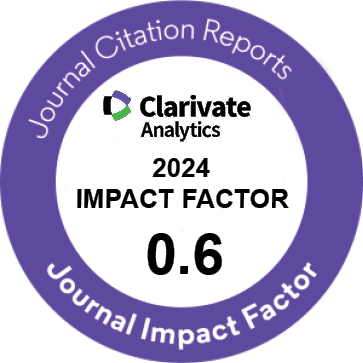| Original Article | |
| Comparison of Cesarean Section and Normal Vaginal Delivery Using Entonox Inhalation in Terms of Oxidative Stress Indices in Newborns and Mothers | |
| Katayon Vakilian1, Akram Ranjbar2 | |
| 1Department of Nursing, Nursing and Midwifery School, Arak University of Medical Sciences, Arak, Iran 2Department of Toxicology and Pharmacology, School of Pharmacy, Hamadan University of Medical Sciences, Hamadan, Iran |
|
|
IJWHR 2018; 6: 075-079 DOI: 10.15296/ijwhr.2018.13 Viewed : 4512 times Downloaded : 16023 times. Keywords : Oxidative stress, Cesarean section, Entonox, Newborn |
|
| Full Text(PDF) | Related Articles | |
| Abstract | |
Objectives: Introduction: Review of articles point out that the route of delivery may cause oxidative stress. Since management of labor is of great importance for healthy childbearing, the present study was performed to compare cesarean section (CS) and normal vaginal delivery (NVD) through Entonox inhalation in terms of oxidative stress indices in mode of delivery. Materials and Methods: Sixty women undergoing CS and 60 women undergoing painless labor using Entonox gas were included in the study after obtaining a written informed consent. Three tests including lipid peroxidation, total thiol molecules (TTMs), and ferric reducing ability of plasma (FRAP) assay were performed. To this end, venous blood samples (5 mL) were obtained from the mothers at the end of the second stage of labor or after surgery. The same indices were measured for 5 mL of blood sample taken from the umbilical artery of the infants. Descriptive (means) and analytical (independent t test) tests were employed for data analysis. Results: Mean maternal lipid peroxidation level in the CS and Entonox groups were 5.798 ± 4.210 and 5.105 ± 2.892 nmol/mm, respectively (P = 0.544). TTMs were 0.2846 ± 0.2632 and 0.2656 ± 0.2437 mmol/mm in the CS and Entonox groups (P = 0.687). Moreover, mean scores of FRAP were 0.766 ± 0.516 and 1.057 ± 0.626 nmol/mm in the CS and Entonox groups, respectively (P = 0.007). However, oxidative stress indices of the infants were not different between 2 groups (P > 0.05). Conclusion: Since total antioxidant capacity in the CS group was lower compared to the Entonox group, it seems that maternal antioxidant defense decreases. Thus, Entonox can be used safely from the perspective of oxidative stress indices. |
Cite By, Google Scholar
Online Submission System
 IJWHR ENDNOTE ® Style
IJWHR ENDNOTE ® Style
 Tutorials
Tutorials
 Publication Charge
Women's Reproductive Health Research Center
About Journal
Publication Charge
Women's Reproductive Health Research Center
About Journal
Aras Part Medical International Press Editor-in-Chief
Arash Khaki
Mertihan Kurdoglu Deputy Editor
Zafer Akan






















